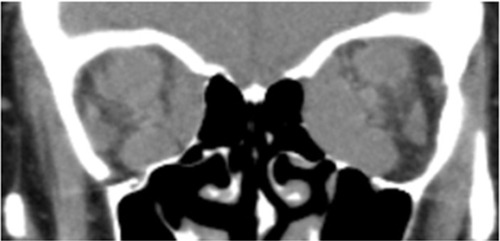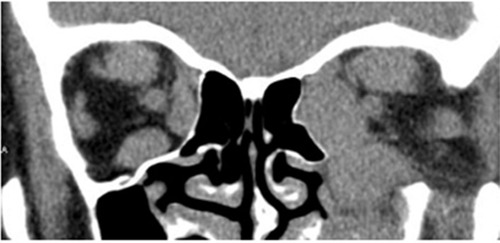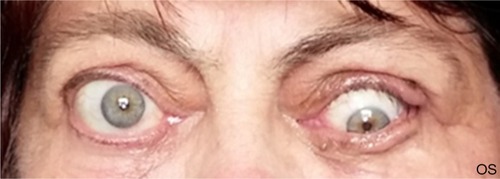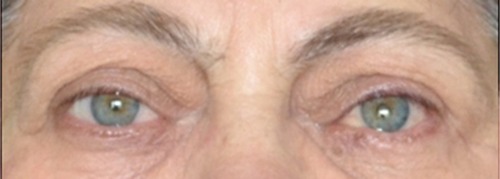Figures & data
Figure 1 The patient’s appearance on admission to Endocrinology research centre (Moscow, Russia).

Figure 2 Multislice CT scan (coronal plane) prior to orbital decompression.

Figure 3 Multislice scan (coronal plane) 1 week after bony decompression of the left orbit.



